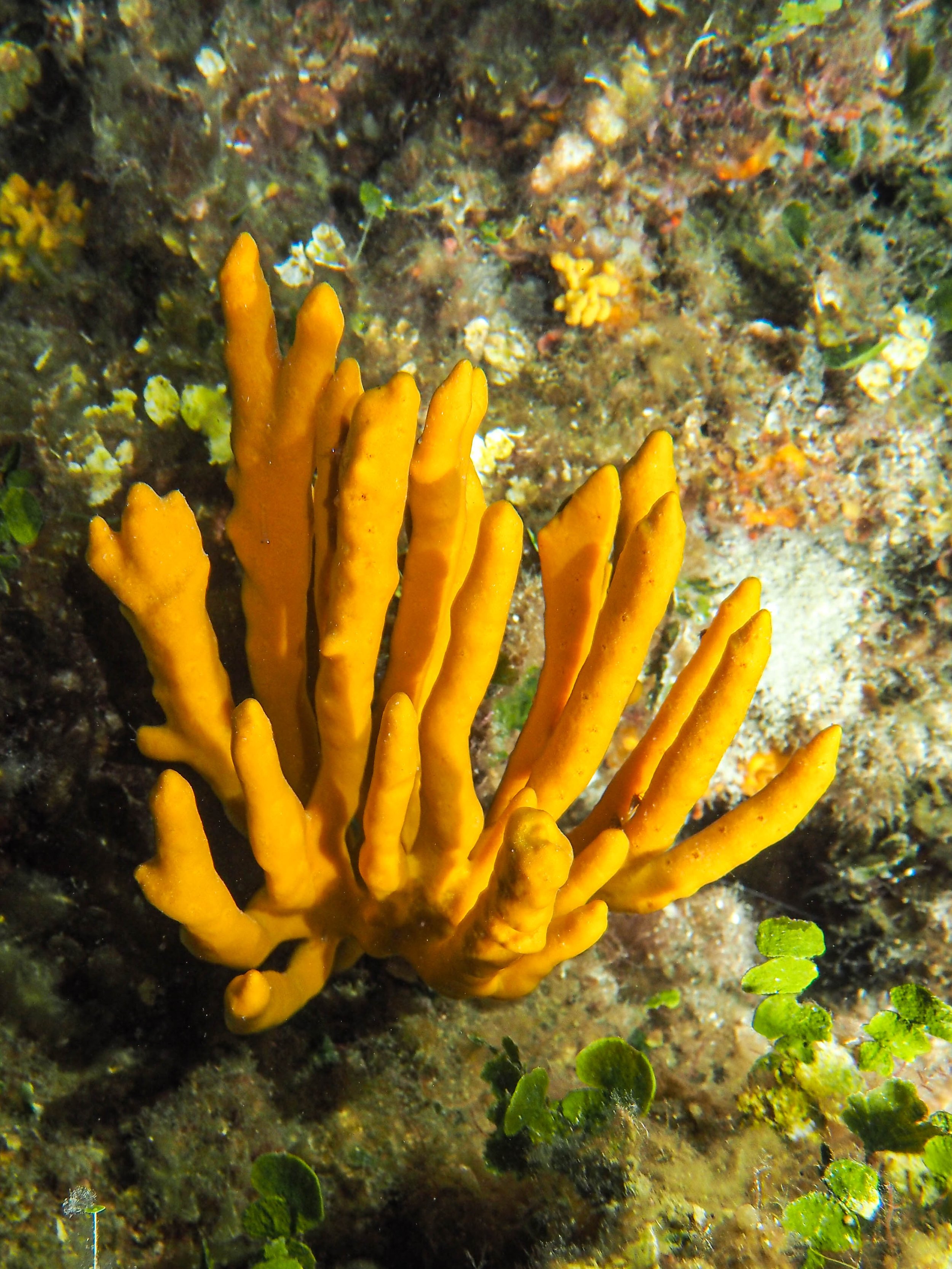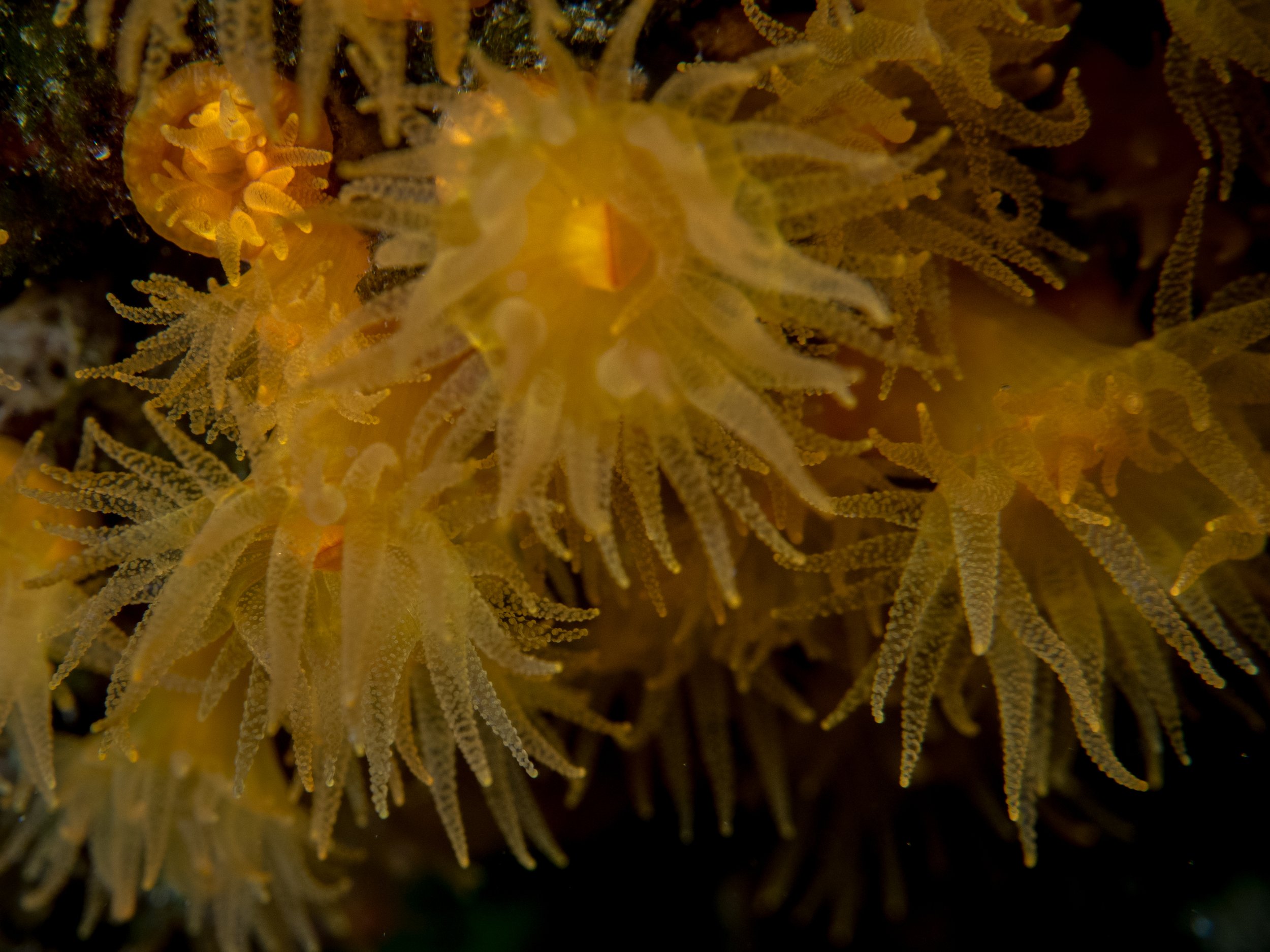Coral
Coral are characterized by skeletons—external or internal—of a stonelike, horny, or leathery consistency.
The body of a coral animal consists of a polyp—a hollow cylindrical structure attached at its lower end to some surface. At the free end is a mouth surrounded by tentacles. The tentacles, which gather food, are more or less extensible and are armed with specialized stinging structures, called nematocysts, that paralyze prey.
Corals are related to sea anemones, and they all share the same simple structure, the polyp. The polyp is open at one end: the open end has a mouth surrounded by a ring of tentacles. The tentacles have stinging cells, called nematocysts, that allow the coral polyp to capture small organisms that swim too close. Inside the body of the polyp are digestive and reproductive tissues. Corals differ from sea anemones in their production of a mineral skeleton.









Orange cup coral (Tubastraea coccinea)
This non-reef building coral extends beautiful translucent tentacles at night. Tubastraea coccinea is heterotrophic and does not contain zooxanthellae in its tissues as many tropical corals do, allowing it to grow in complete darkness as long as it can capture enough food. Tubastraea coccinea inhabits shaded vertical surfaces and caverns down to huge depths. Orange-cup-corals are also found in very cold water throughout the world. Orange-cup corals often dominate tropical habitats not occupied by other coral species, such as wrecks and cryptic reef habitats.[2] They also colonize artificial structures,[3] but experiments have demonstrated similar preferences for granite, cement, steel and tile.[4] In Brazil, they are most abundant in the shallow sub-tidal zone at shallow depths between 0m and 3m.







